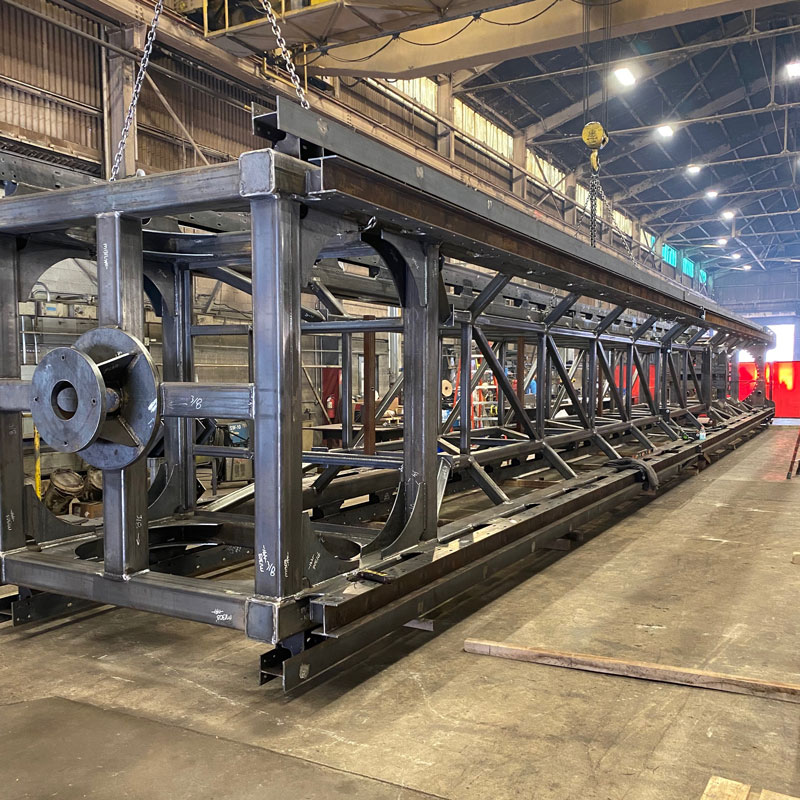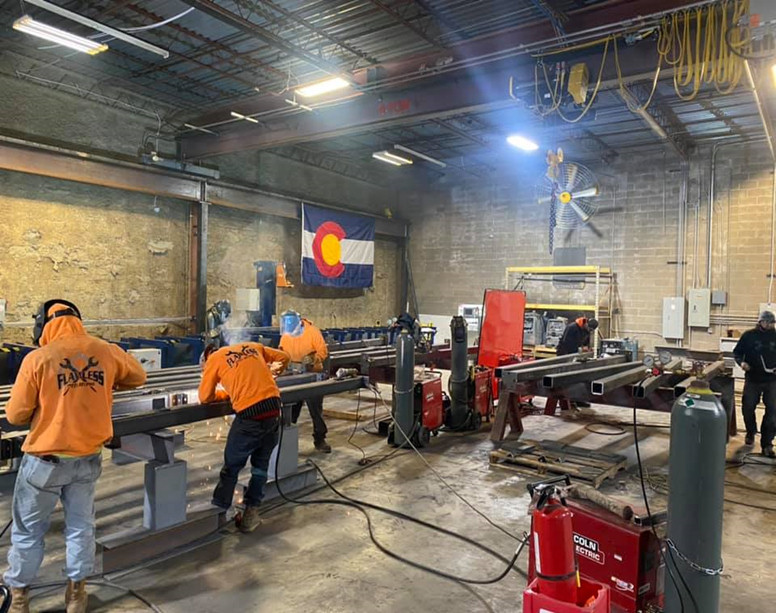Advanced Steel Fabrication Melbourne: Building the Future Today
Advanced Steel Fabrication Melbourne: Building the Future Today
Blog Article
Comprehensive Analysis of Cutting-Edge Techniques in Steel Manufacture Sector
As the steel manufacture market remains to evolve, the assimilation of cutting-edge methods has actually ended up being crucial for staying affordable and fulfilling the needs of contemporary production requirements. From laser cutting improvements to the application of robotics and 3D printing in steel manufacturing, the landscape of manufacture techniques is quickly changing. With each development bringing its very own collection of advantages and difficulties, an extensive analysis of these methods is extremely important for business intending to streamline their processes, improve precision, and eventually, boost the quality of their steel construction result. In this vibrant industry where innovation plays a critical role, recognizing the subtleties of these sophisticated methods is not just an alternative however a requirement for those looking to create ahead in the ever-evolving world of steel construction.
Laser Reducing Improvements
In the world of steel construction, laser reducing improvements have changed the accuracy and efficiency of metal shaping procedures. By utilizing the power of focused laser beam of lights, makers can now achieve exceptional levels of precision when puncturing various kinds of metals. This modern technology enables intricate styles to be executed with marginal material wastefulness, making it an affordable option for sectors requiring high accuracy parts.
Among the crucial benefits of laser cutting is its ability to handle a variety of materials, including stainless steel, aluminum, and carbon steel, with ease. The procedure creates clean, burr-free edges, removing the need for extra ending up actions. In addition, the non-contact nature of laser cutting reduces the risk of product contamination, resulting in better final result.
Moreover, laser reducing devices can be programmed to make swift, accurate cuts, dramatically lowering production time compared to typical reducing methods. This rate and precision make laser cutting especially suitable for mass manufacturing environments where performance is paramount. As innovation remains to advance, laser cutting is poised to play a progressively essential function in the steel fabrication industry.

CNC Machining Innovations
The advancement of CNC machining technologies has actually ushered in a new era of precision and efficiency in the steel construction industry. Computer Numerical Control (CNC) equipments have actually revolutionized steel construction by providing unparalleled precision and repeatability in the manufacturing procedure. Alpha reo. Among the essential developments in CNC machining is the combination of advanced software application systems that enable real-time tracking and adjustments, causing improved efficiency and top quality control
In addition, the growth of multi-axis CNC makers has permitted for the manufacture of intricate steel elements with complex styles that were previously challenging to create. These equipments can carry out a wide array of machining procedures, including milling, drilling, transforming, and grinding, all with high levels of accuracy.
Additionally, the consolidation of automation and robotics in CNC machining has structured production processes, minimized preparations, and lessened the margin of mistake. This combination of advanced technologies not only boosts efficiency but also guarantees consistent high quality throughout all made steel parts. To conclude, CNC machining advancements proceed to drive improvements in the steel construction market, establishing brand-new standards for precision and performance.
Automated Welding Technologies
Automated welding innovations have revolutionized the steel construction sector, enhancing effectiveness and accuracy in the welding process. These advanced innovations utilize computer-controlled systems to automate the welding procedure, resulting in higher efficiency degrees and boosted weld quality. One of the crucial benefits of automated welding is the capability to perform intricate welds with regular precision, minimizing the likelihood of mistakes and remodel.
Robotic welding systems are at the leading edge of automated welding modern technologies, supplying unmatched speed and accuracy. These systems can handle a large range of welding jobs, from basic to elaborate, effortlessly (Alpha reo). By making use of advanced sensing units and software, robot welders can adjust to variants in product and joint geometry, making sure an attire and dependable weld
Furthermore, automated welding technologies boost work environment safety by decreasing the exposure of human welders to unsafe fumes and extreme find this warmth. As the steel fabrication market continues to advance, integrating automated welding technologies will certainly be crucial for firms seeking to stay affordable and satisfy the expanding needs for top quality bonded items.
Robotics Combination in Manufacture
Using robotic systems in manufacture procedures has actually ended up being a pivotal strategy for improving performance and accuracy in modern-day manufacturing settings. Robotics integration in steel construction offers a myriad of advantages, including increased productivity, improved top quality control, and boosted precaution. These innovative robot systems are furnished with advanced sensors and programming capabilities, allowing them to carry out elaborate jobs with a high degree of precision and repeatability.
Among the vital benefits of robotics integration in steel construction is the ability to automate repetitive tasks, such as material handling, reducing, welding, and setting up procedures. This not only accelerates production cycles however also reduces the threat of human mistake, leading to higher total item high quality. In addition, robots can operate 24/7, dramatically increasing production outcome and meeting tight project target dates.

3D Printing in Steel Production
Having actually transformed the steel construction sector through robotics assimilation, the blossoming exploration of 3D printing in steel production is poised to more breakthrough the realm of modern production methods. 3D printing, likewise called additive manufacturing, supplies unmatched design liberty and complexity, making it possible for the production of intricate steel structures that were previously unattainable through standard production approaches. By making use of computer-aided style (CAD) software program, manufacturers can specifically manage the layer-by-layer deposition of steel product, causing parts with improved performances and geometries.
One of the vital benefits of 3D printing in steel production is its ability to lower product waste substantially. Unlike subtractive manufacturing procedures where excess material is trimmed away, 3D printing only uses the necessary quantity of steel needed for the last part. This effectiveness not just causes cost savings but additionally lines up with sustainable manufacturing practices by reducing environmental influence.
Moreover, 3D printing enables quick prototyping and customization, permitting the manufacturing of small batches of complex steel elements with short preparations. As the modern technology proceeds to grow and become much more accessible, its integration right into mainstream steel construction processes is anticipated to drive technology and efficiency throughout the industry.
Verdict
Finally, the steel fabrication sector has seen substantial improvements in methods such Read Full Report as laser cutting, CNC machining, automated welding, robotics assimilation, and 3D printing. These advanced modern technologies have reinvented the means steel items are produced, resulting in raised performance, accuracy, and cost-effectiveness. Continued financial investment in these innovative methods is essential for the industry to stay competitive and meet the needs of modern-day manufacturing processes.
As the steel construction sector proceeds to evolve, the combination of innovative strategies has come to be crucial for staying affordable and satisfying the demands of contemporary manufacturing standards.One of the essential benefits check of laser cutting is its ability to deal with a vast variety of materials, including stainless steel, aluminum, and carbon steel, with simplicity.Automated welding modern technologies have transformed the steel manufacture sector, improving efficiency and accuracy in the welding process.Having revolutionized the steel fabrication sector via robotics integration, the growing exploration of 3D printing in steel production is positioned to further breakthrough the world of modern-day production strategies.In verdict, the steel manufacture sector has actually seen significant developments in strategies such as laser cutting, CNC machining, automated welding, robotics assimilation, and 3D printing.
Report this page